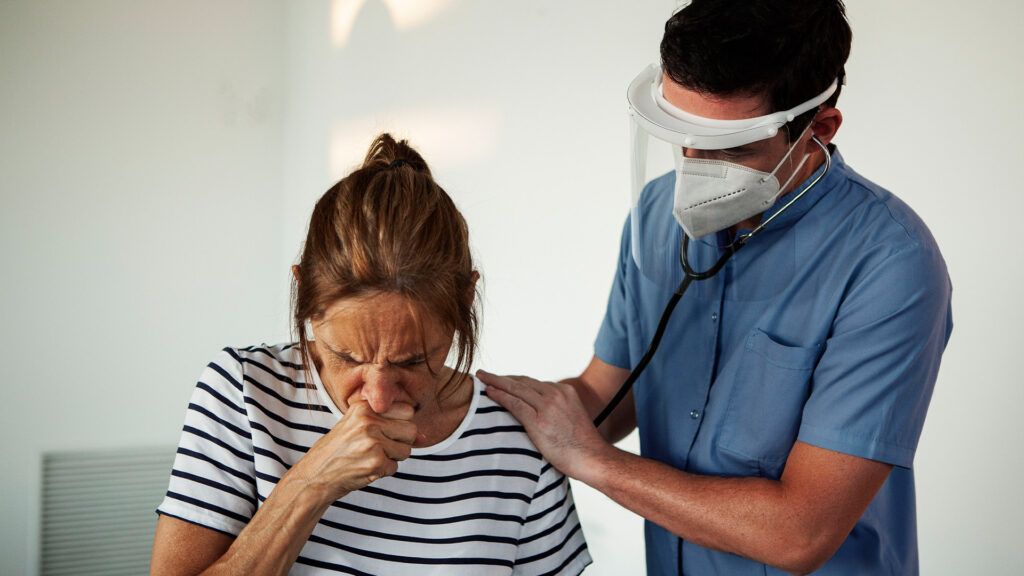Tuberculosis (TB) primarily affects the lungs. However, TB-causing bacteria can lead to pus collecting in the tissues. This is known as an abscess.
Mycobacterium tuberculosis (M. tuberculosis) is the bacterium that causes TB. It primarily targets the lungs but can also affect other body parts, such as the lymph nodes, bones, and central nervous system.
The hallmark of tuberculosis is a persistent cough, which, when left untreated, can lead to severe respiratory complications and other systemic effects.
In some instances, tuberculosis-causing bacteria leads to abscesses. These abscesses can develop in multiple organs and tissues, making diagnosis and management of the condition more complex.
This article covers tuberculosis abscesses, their challenges, and how doctors effectively manage them.

Although tuberculosis primarily affects the lungs, it can cause abscesses in various tissues.
These abscesses are collections of pus that form as a defensive reaction to the M. tuberculosis infection. The immune system responds to the bacteria by isolating the disease-causing agents, which can form pus-filled pockets.
Tuberculosis abscesses can develop in several locations, including:
- cervical lymph nodes in the neck
- brain, known as tuberculoma
- spine, known as
Pott disease - abdominal cavity
In some cases, the bacteria can travel through the bloodstream, leading to abscesses in organs far from the initial infection site, such as the liver or kidneys.
Cutaneous tuberculosis (CTB) is a rare form of tuberculosis, accounting for
The symptoms of a tuberculosis abscess vary depending on its location.
An abscess in the neck may present as a noticeable swelling or lump, often accompanied by pain and tenderness. If the abscess is in the brain, symptoms could include headaches, neurological deficits, or convulsions.
A person may also have general tuberculosis symptoms, such as:
- a severe cough lasting three weeks or longer
- coughing up blood or sputum
- fever
- chest pain
- night sweats
- unexplained weight loss
- weakness or fatigue
- loss of appetite
TB is a contagious disease. According to the
However, TB-causing bacteria can
While a TB abscess itself may not be contagious, a person could contract M. tuberculosis through direct contact with the bacteria. This is especially true in those with certain health conditions and weakened immune systems.
Learn more about TB transmission.
TB abscess treatment involves multiple methods, including medications or surgery, depending on the individual’s specific condition.
The primary treatment is a prolonged and aggressive course of anti-tuberculosis medication. Typically, this includes a combination of antibiotics such as:
- isoniazid
- rifampicin
- ethambutol
- pyrazinamide
TB abscesses often require prolonged courses of treatment compared to standard TB. A person may have several months of antibiotic therapy combined with corticosteroids. For example, doctors typically treat tuberculomas with anti-tuberculous drugs for
Also, the duration and intensity of antibiotic therapy may vary based on factors, including:
- abscess size
- location of abscess
- the patient’s overall health status
For instance, an abscess in a more critical or hard-to-reach area might require a longer or more intensive treatment regimen.
Surgery
Doctors may also recommend surgery if the abscess is:
- large
- in a sensitive area
- is not responding well to antibiotics alone
Surgical drainage removes the pus and infected tissue, which can provide significant relief. Drainage may also support antibiotic treatment.
Regular monitoring through imaging tests and laboratory evaluations is often part of the follow-up care. This allows doctors to assess the response to treatment and adjust the management plan as necessary.
The outlook for individuals with TB abscesses may depend on the following:
- the form of TB a person has
- the location and size of the abscess
- a person’s overall health
- available treatments
- treatment adherence
The sooner a TB abscess is diagnosed, and treatment begins, the better the outcome. Early intervention can prevent the infection from spreading to other areas of the body and reduce the risk of long-term complications.
Timely administration of anti-tuberculosis medication, coupled with appropriate surgical intervention if needed, plays a crucial role in positively affecting the recovery process.
Tuberculosis primarily affects the lungs, but in some diagnoses, it can lead to abscess formation. These abscesses occur when M. tuberculosis bacteria cause localized pus collections in the tissues, potentially affecting the neck, brain, and spine.
Symptoms can vary widely depending on the abscess location and may include localized pain and swelling, neurological issues, and general signs of TB such as fever and weight loss.
Treating TB abscesses involves a combination of anti-tuberculosis medication and, in some instances, surgery. Doctors adjust the treatment duration based on the abscess’ severity and location, but it is often several months in duration.
The outlook for individuals with a TB abscess largely depends on the type of TB, the abscess’ characteristics, the person’s overall health, and treatment adherence.
